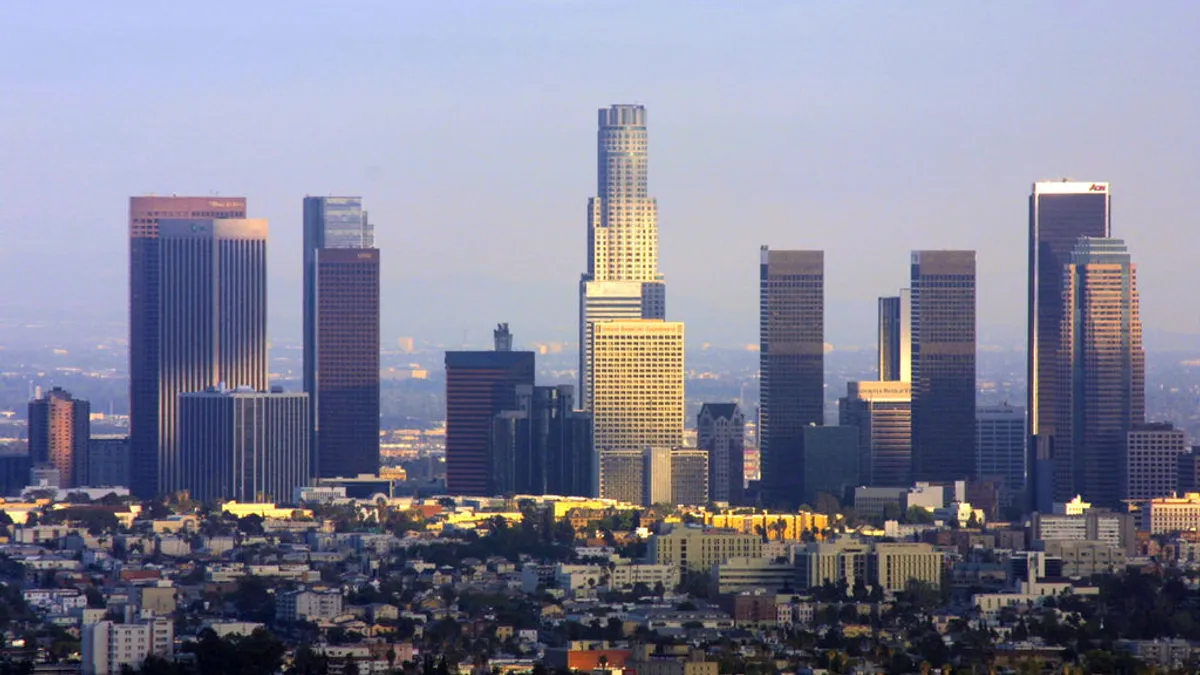Dive Brief:
- Some South Los Angeles community activists are pushing back against a planned upscale, 30-story, mixed-use residential tower — the first of its kind for the area — claiming it has the potential to drive up rents and price existing residents out of their own neighborhoods, The Los Angeles Times reported.
- The new 2-million-square-foot "Cumulus" project will take up 11 acres near an Expo Line station and include more than 1,200 units — 55 below-market — 200,000 square feet of offices and 100,000 square feet of grocery, restaurant and retail space, creating 1,700 construction jobs and 1,200 permanent positions.
- The Crenshaw Subway Coalition and Friends of the Neighborhood Integrity Initiative filed a lawsuit that claims Los Angeles officials skirted zoning laws to approve the project.
Dive Insight:
Community officials said the criticism for the project is coming from outside the immediate neighborhood and that nearby residents and businesses welcome the services and amenities that will come with the new tower. Local business and community leaders have said the area is still recovering from the 1992 riots and that this type of project is what the area needs to develop economically and to take advantage of the mass transit investment made to connect the neighborhood to Los Angeles International Airport.
Fears of gentrification and the potential for a fundamental change to a neighborhood's character are major reasons that activists all over the country, including Los Angeles, oppose such developments in their neighborhoods.
Albert Goldson, executive director of advisory firm Indo-Brazilian Associates in New York and a community development activist, told Construction Dive that an upscale tower is a "de facto gated community" and that these "vertical suburbs" don't do much to serve the local residents. In addition, he said, new residents often use the isolated quality of a tower to keep a physical distance between themselves and the locals.
Thomas Leslie, professor of architecture at Iowa State University, said these towers can create "a diversity of residents," but that communities often protest their development because they don't fit in with the character and "aesthetic" of the neighborhood.








